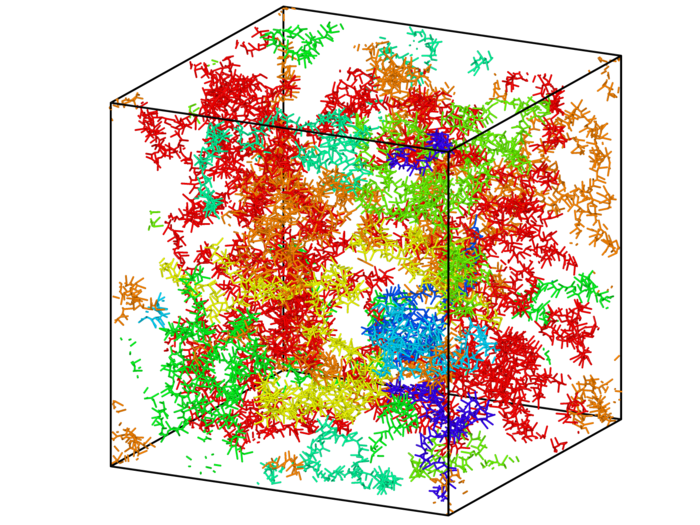AMHERST, Mass. – In a discovery with wide-ranging implications, researchers at the University of Massachusetts Amherst recently announced in the Proceedings of the National Academy of Sciences that uniformly charged macromolecules—or molecules, such as proteins or DNA, that contain a large number of atoms all with the same electrical charge—can self-assemble into very large structures. This finding upends our understanding of how some of life’s basic structures are built.

Credit: Shibananda Das
AMHERST, Mass. – In a discovery with wide-ranging implications, researchers at the University of Massachusetts Amherst recently announced in the Proceedings of the National Academy of Sciences that uniformly charged macromolecules—or molecules, such as proteins or DNA, that contain a large number of atoms all with the same electrical charge—can self-assemble into very large structures. This finding upends our understanding of how some of life’s basic structures are built.
Traditionally, scientists have understood charged polymer chains as being composed of smaller, uniformly charged units. Such chains, called polyelectrolytes, display predictable behaviors of self-organization in water: they will repel each other because similarly charged objects don’t like to be close to each other. If you add salt to water containing polyelectrolytes, then molecules coil up, because the chains’ electrical repulsion is screened by the salt.
However, “the game is very different when you have dipoles,” says Murugappan Muthukumar, the Wilmer D. Barrett Professor in Polymer Science and Engineering at UMass Amherst the study’s senior author.
While many molecules have either a positive or negative charge, dipoles have both. This means that polymers composed of dipoles behave very differently from the more familiar polyelectrolytes, which have either a positive or negative electrical charge: they expand in a salty solution and can form cross-links with other dipole polymer chains, which then leads to the formation of complex polymer structures.
Di Jia, who completed this research as part of her postdoctoral training at UMass Amherst and is the study’s lead author, says that “dipoles can make polyelectrolytes behave more like polyzwitterions, which exhibit an ‘anti-polyelectrolyte effect.’ This effect is also a feature of the traditional chemical polyzwitterions, whose dipoles are made of chemical bonds. Therefore, for physical polyzwitterion in dilute solutions, the polymer size increases with increasing ionic strength, exhibiting a globule-to-coil transition due to the intra-chain dipole interactions.”
Dipolar polymers are capable of forming complex, self-regulating structures which could be employed in everything from drug-delivery systems to next-generation polymers. “We theorize that these dipolar forces in charged macromolecules play a significant role in almost all biological assembly processes, such as the spontaneous birth of membraneless organelles,” says Muthukumar.
Furthermore, these dipole-composed polymers exhibit an “in-between” state, called “mesomorphism.” In the mesomorphic state, the polymers are neither widely dispersed nor tightly coiled, but congregated into large, stable, uniform structures that have the ability to “self-poison,” or dissolve.
“The significance of the discovery that dipoles drive the assembly of polymers is immense,” says Muthukumar, “because it throws new light on one of the fundamental mysteries of life’s processes,” or how biological materials know how to self-assemble into coherent, stable structures. “The theory changes the paradigm of how we think about these systems, and highlights the unacknowledged role that dipoles play in the self-assembly of biological materials.”
Contacts: Murugappan Muthukumar, [email protected]
Daegan Miller, [email protected]
Journal
Proceedings of the National Academy of Sciences
DOI
10.1073/pnas.2204163119



